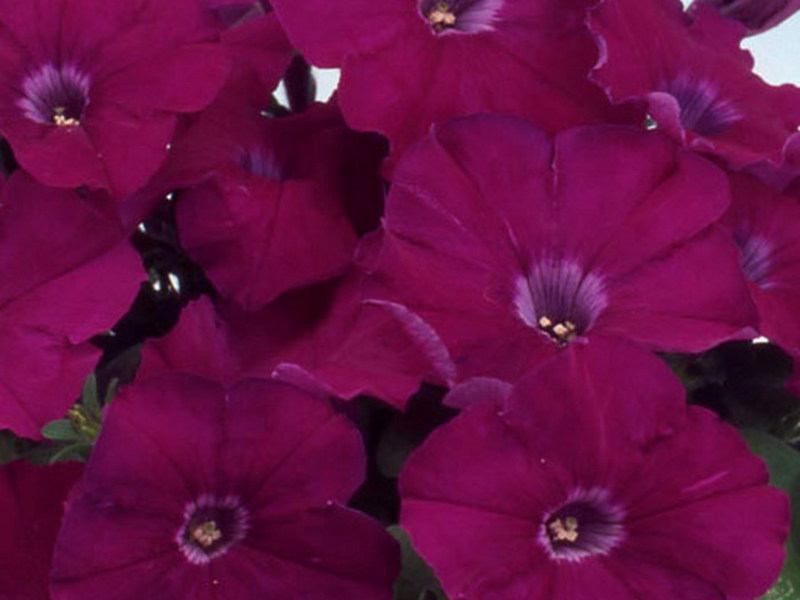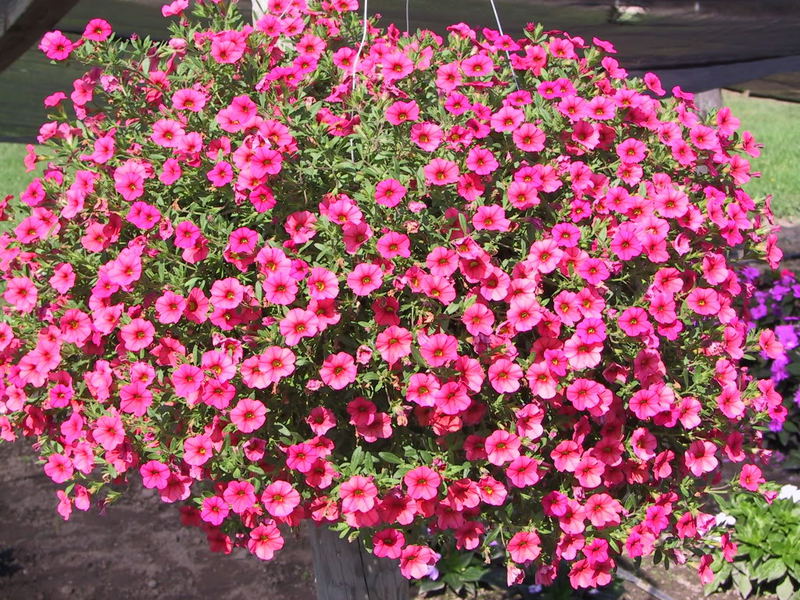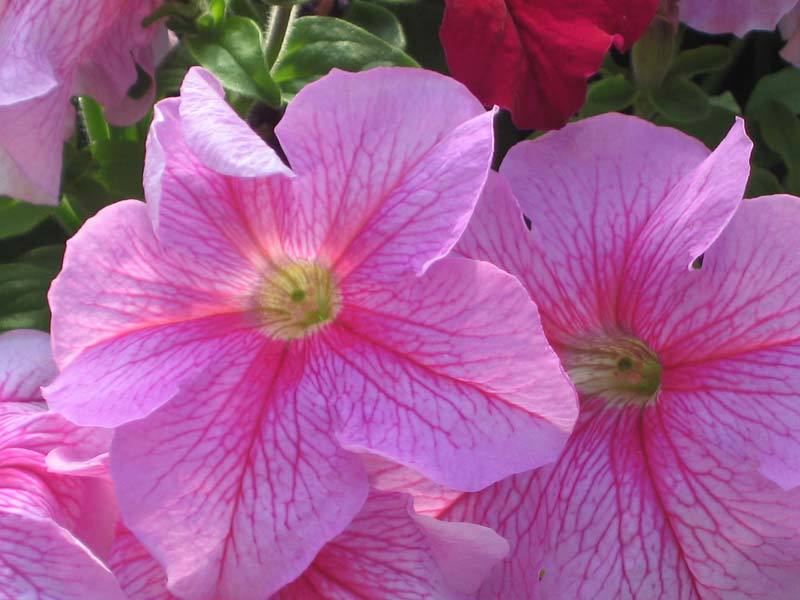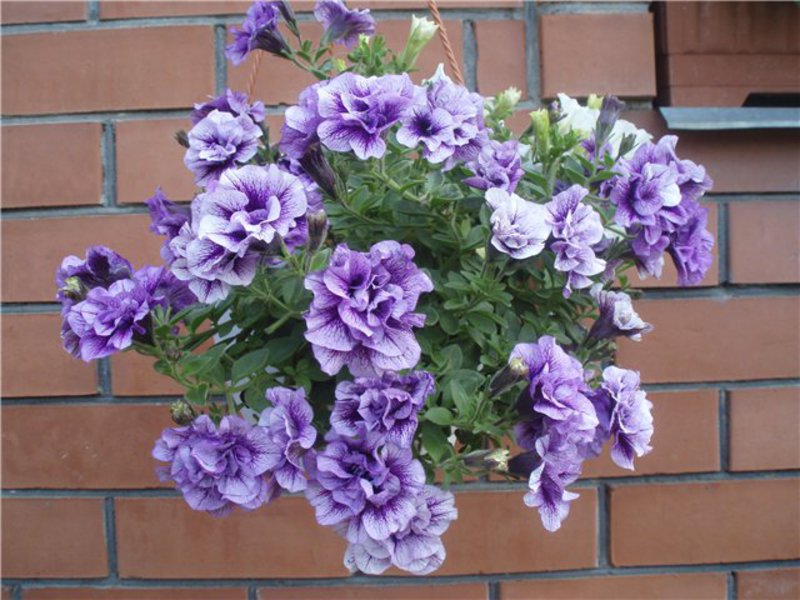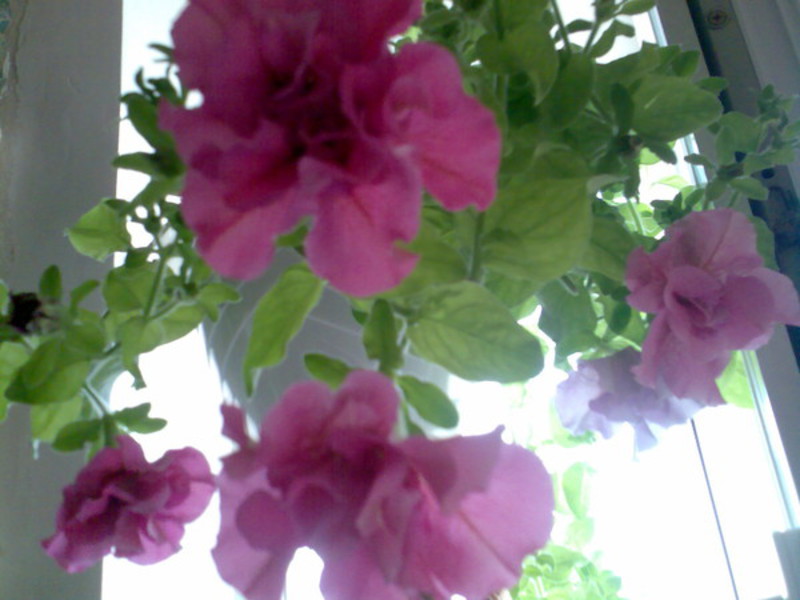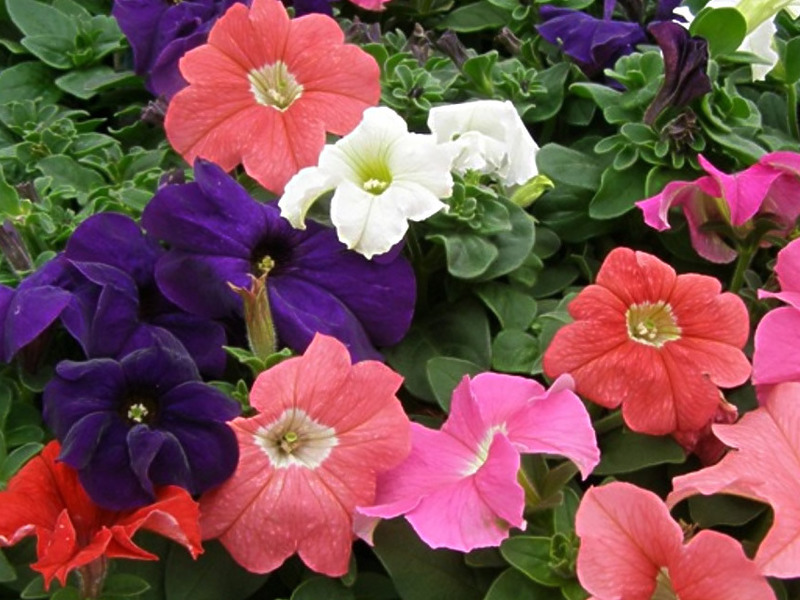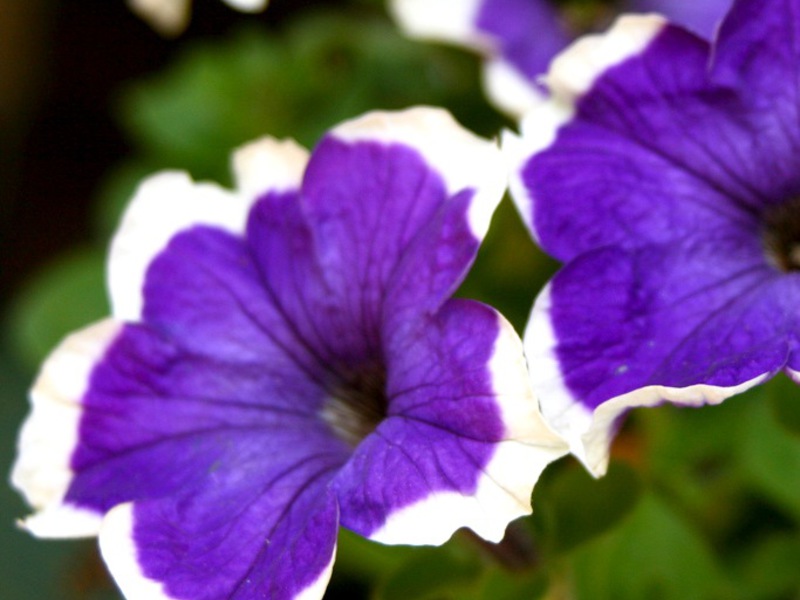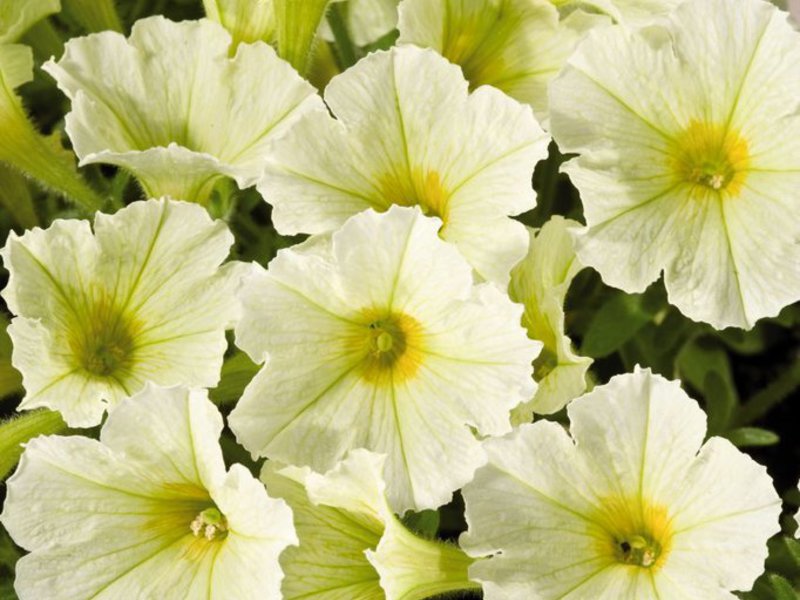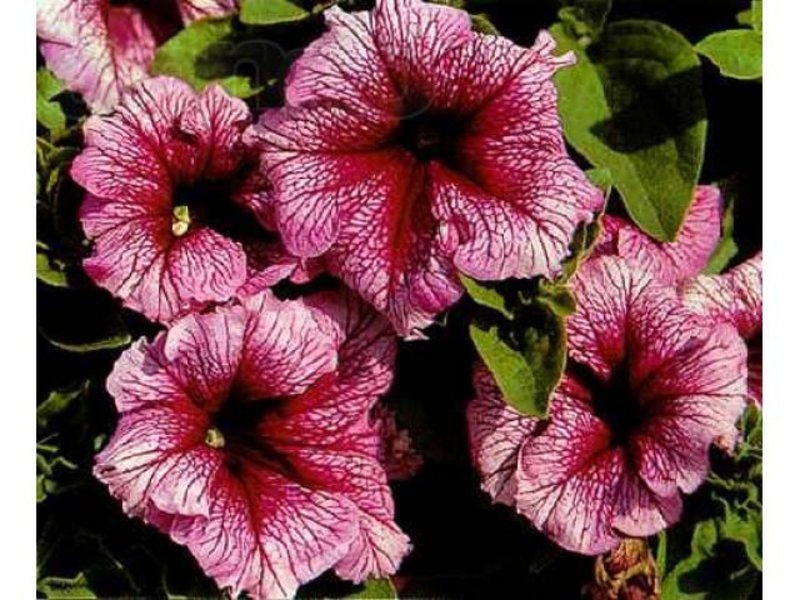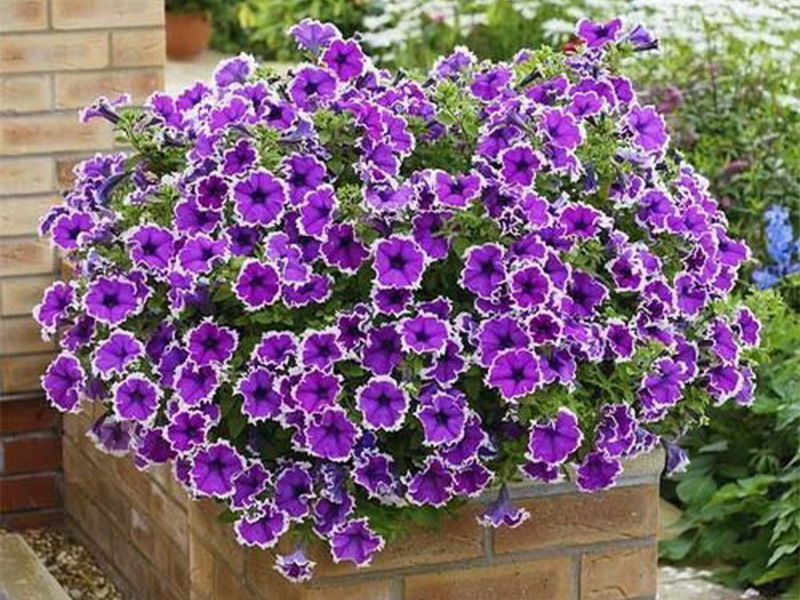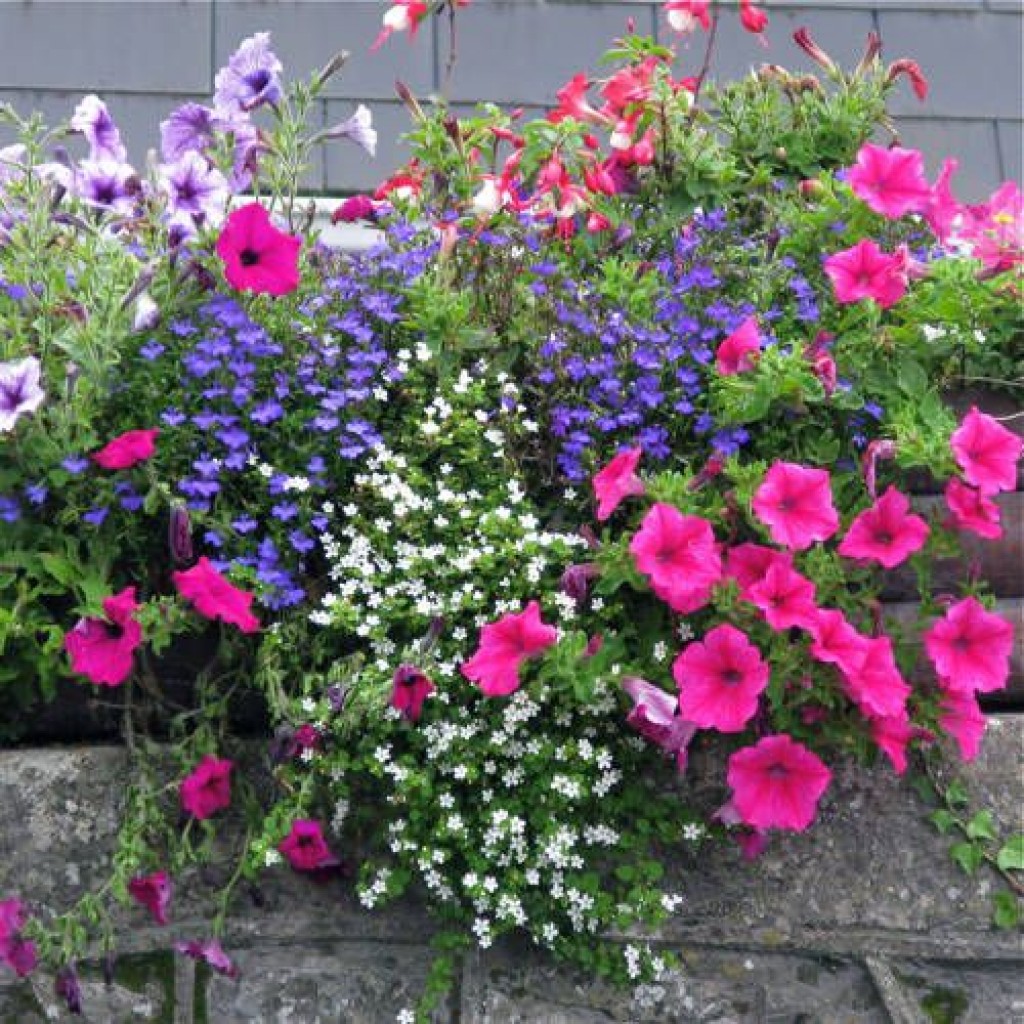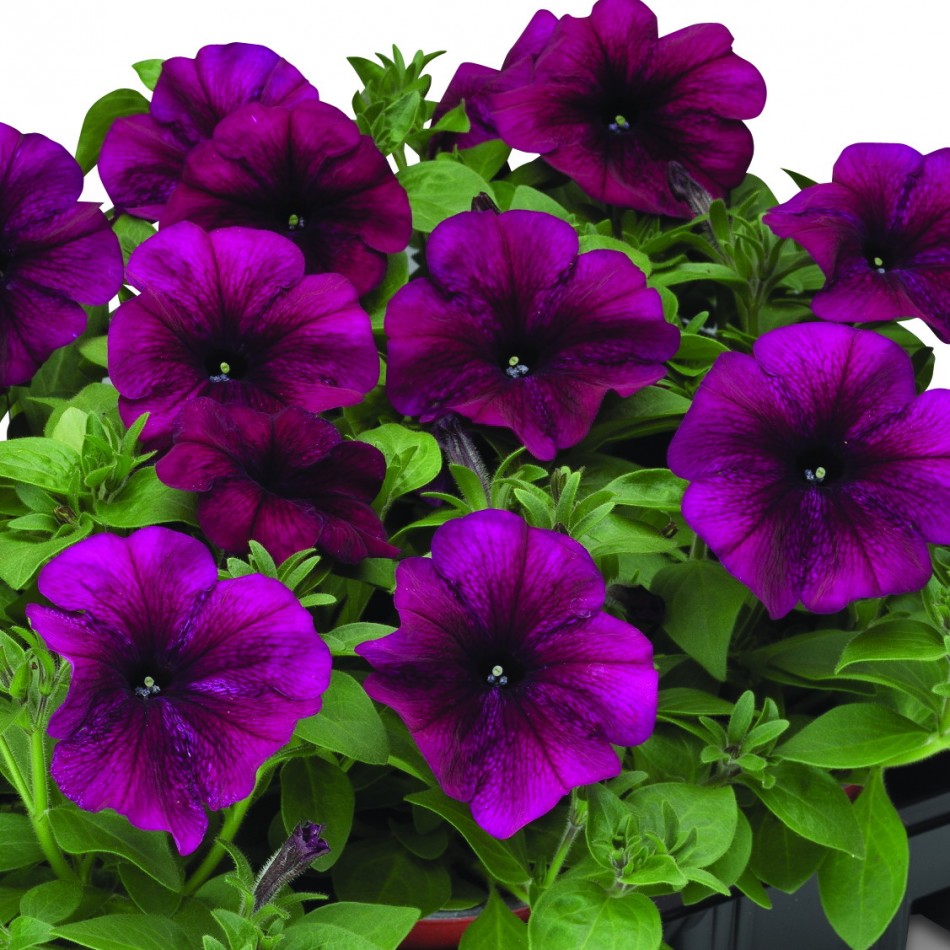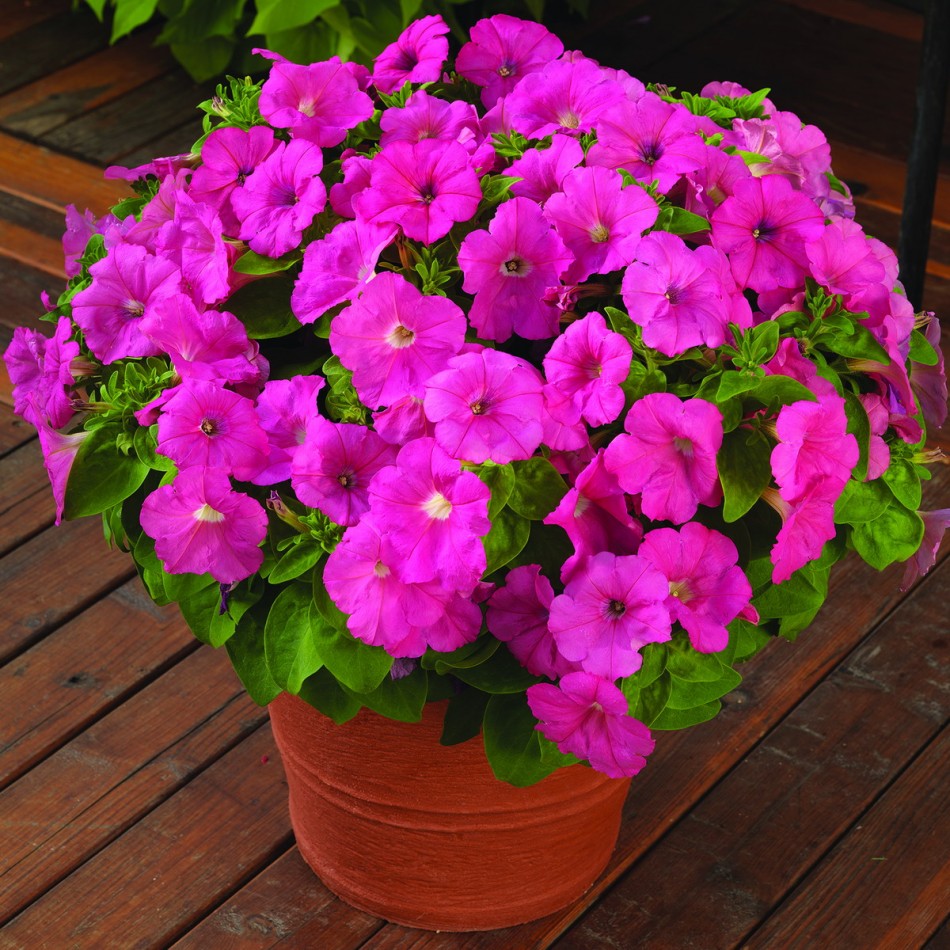Petunia is great for growing, both as a garden plant and as a house flower. Ease of care, a wide range of colors, a huge selection of forms make it possible to widely use various types of petunias for organizing pots and flowerpots, borders and flower beds. Therefore, she is a frequent visitor both in city flower gardens and in summer cottages.
Content
Types and varieties of petunias. Description and photo
Petunia has a rather complex classification, which is explained by long-term breeding work. Today, there are already approximately 70 varieties of this plant.
New charcoal, blueberry, sour green colors of varieties can impress even a very sophisticated gardener. But for a beginner, who, as a rule, relies only on a photo, it can be difficult to understand the whole varietal variety of these plants.
When choosing a certain variety, it is necessary to take into account the growth conditions of the flower. Since the best specimens for hanging pots are absolutely not suitable for decorating paths or open land, and the plants entwining the terraces will be absolutely inappropriate in the organization of flower beds. You can rely on reviews and numerous photos, but it is more correct to understand for yourself what is the difference between an ampelous variety and a cascading one, and a floribunda from a bush type.
Bush varieties
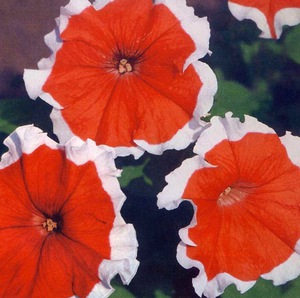 This group is quite diverse and numerous. Here there are both the most compact plants with a complex floral subgroup Multiflora with a flower diameter of up to 5 centimeters, and quite large representatives of the Grandiflora subgroup - larger than 16 centimeters.
This group is quite diverse and numerous. Here there are both the most compact plants with a complex floral subgroup Multiflora with a flower diameter of up to 5 centimeters, and quite large representatives of the Grandiflora subgroup - larger than 16 centimeters.
Long-term bush varieties are characterized by lush inflorescence caps. Ideal for decorating ridges, growing on curbs and flower beds. Compact varieties are planted in containers.
The name of this subspecies is responsible for itself - the plant has the shape of a bush. For which it is not necessary to carry out special work on the formation, but when you pinch the top, then new branches will appear, they will make the bush much lush and spreading.
Among bush plants, the most common hybrids are: Dreamm, Fantasy, Hit-Parade, Titan. Connoisseurs of early flowering plants will love the series Polaris and Ultra... And those who are afraid for the fragile species of plants will be pleased with the Storm petunias, they have high resistance to bad weather.
Floribunda
Varieties of this species of petunias in flower diameter are in the middle position between the specimens of the Grandiflora and Multiflora groups. Any varietal group has its pros and cons. Celebrity has 14 hybrids in its subgroup, which are characterized by increased resistance under negative weather conditions, they tolerate dry days and heavy precipitation well.
Floribunda is typically used for large scale plantings.The most popular for these purposes are 12 hybrids of the Sonya subgroup. Among which, Sonya Orchid, its leaves have contrasting veins of different colors.
Cascading varieties
These varieties of petunias are planted in large containers, as they tend to grow significantly in breadth. Their distinctive feature is long lateral branches, and therefore more than three plants can rarely be placed in one container. This feature has found itself in the design of gazebos, loggias, terraces.
The following types of petunias Silver, Rose, Typhoon, Rumplin and Cherry are very popular. These varieties, without various pinches and tricks, can throw whips up to 1.5 meters.
Ampel varieties
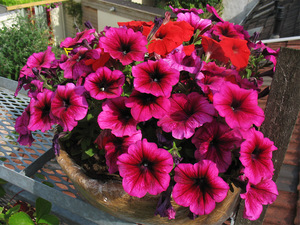 This variety of petunias forms elongated flowing branches. These plant varieties are ideal for hanging planters. At the same time, gardeners successfully grow these varieties in flower beds. Branches spreading along the surface create beautiful and original carpets of flowers.
This variety of petunias forms elongated flowing branches. These plant varieties are ideal for hanging planters. At the same time, gardeners successfully grow these varieties in flower beds. Branches spreading along the surface create beautiful and original carpets of flowers.
Among these varieties of petunias, the variety Sufrinia differs in saturation and a large selection of flowers. Among other things, this petunia is appreciated by gardeners due to its resistance to bad weather, fast germination and early onset of flowering. Also common types of petunias are Lilac and Pearl surf, Waterfall and Wave of Fortune.
Calibrachoa
This group of plants looks very similar to petunia, and for quite a long time was considered one of its species. In addition to the distinctive number of chromosomes, Calibrachoa has significant morphological differences:
- leaves and inflorescences are much smaller;
- the stem of this plant is more lignified and branches more;
- even framing of petals;
- greens have short, elastic hairs.
New Calibrachoa hybrids have become very popular among gardeners. Millionbells has won international competitions more than once. Also noteworthy are the varieties Noah, Cabaret, Superbels.
Description and differences of the cascading variety
Among the characteristic features of the cascading variety are:
- the ability to build up long branches;
- thick and elastic branches;
- inflorescences of medium diameter;
- the growth of branches is directed upward and sideways.
This petunia variety is best planted in a pot. It is undesirable to plant more than one bush in a pot with a capacity of up to 6 liters. In a large container with a volume of 11-15 liters, several petunias can take root.
Cascading varieties of petunias can grow significantly. Seedlings at the beginning of active growth tend to go up. But after a while, as it matures, the elastic stem begins to sag under its mass, creating strong thickets with many flowers.
Growing a cascading variety
This type of petunias is propagated using seeds. Landing takes place from March to May. The soil mixture for planting is very easy to make with your own hands. Why you will need sifted sand, turf soil, peat and humus. All these elements must be added in equal parts. At the bottom of the container, a layer of expanded clay is laid out. Disembarkation is carried out according to the following scheme:
 seeds are spread over the surface of the soil mixture;
seeds are spread over the surface of the soil mixture;- using a sieve, pour a small layer of the substance on top;
- watering is done by spraying with a spray bottle;
- covered with glass or polyethylene;
- installed in a well-lit and warm place with a temperature of approximately + 19-24C.
For the first 14 days, the seeds need to be watered every day. A few drops of potassium permanganate can be added to the water to activate growth and prevent disease. As soon as the shoots appear, they must be hardened and aired. For this, the container with crops is exposed to the open air and the material for shelter is removed. Seedlings dive into separate peat cups when the first leaf appears.
As you grow older seedlings need bait:
- the first one is added after 3 weeks from the moment of the pick.The best choice for these purposes are complex water-soluble fertilizers with a small amount of nitrogen;
- the next groundbait is done in 14 days. What are organomineral fertilizers used for?
Landing is carried out in well-heated ground at the end of May. Cultivation works better in open, well-lit places. Care consists in watering and loosening the soil. During flowering, it is advisable to add groundbait once a week.
The most common types of cascading varieties
Among the numerous hybrids, you can highlight a number of varieties, constantly retaining the leadership among gardeners in popularity:
- Ramblin can grow up to 45 centimeters in size, with branches about 1 m long. The earliest petunia species has a long flowering time;
- La Gioconda is a highly branching medium-sized plant, densely covered with inflorescences of medium diameter. It is characterized by the ability to adapt to a wide range of temperatures;
- Double Cascade forms a neat plant covered with large fragrant flowers. Terry leaves are brightly colored, highlighted by purple-green petals.
Description and differences of ampel variety
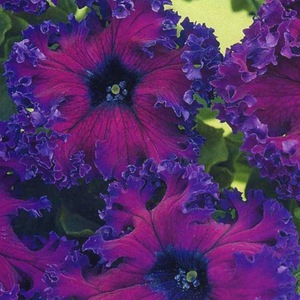 Ampel species are deservedly one of the most interesting varieties. Their distinctive feature is considered elongated hanging branchesthat form beautiful garlands of inflorescences. Due to these unique features, this variety of petunias is used for vertical planting - decorating terraces, gazebos, loggias. These flowers look quite elegant when organizing alpine slides. Their shoots, which spread along the ground, cannot but attract prying eyes.
Ampel species are deservedly one of the most interesting varieties. Their distinctive feature is considered elongated hanging branchesthat form beautiful garlands of inflorescences. Due to these unique features, this variety of petunias is used for vertical planting - decorating terraces, gazebos, loggias. These flowers look quite elegant when organizing alpine slides. Their shoots, which spread along the ground, cannot but attract prying eyes.
What is the difference between an ampel variety and a cascade variety?
Sometimes questions arise, what is the difference between an ampelous variety and a cascading one? In the cascading variety, the branches grow upward, while the ampelous variety has a thin falling stem. There are differences in the size of the inflorescences. Cascading varieties have larger shapes.
The most beautiful types of ampelous petunias. Names and photos
Any variety of petunias has its real connoisseur, but among a wide variety of hybrids there are still unconditional leaders according to the preferences of florists:
- The Explorer is characterized by the longest shoots - their size can be up to 1.6 m. Apart from everything else, these petunias are characterized by a powerful structure that is not afraid of strong gusty winds. Large inflorescences stand out among other plant varieties with an original waxy surface that protects the bush from rain. Has a wide range of leaf color;
- Black velvet differs from the rest in its original color. The highly branched plant can reach sizes of 30-45 cm. The inflorescences are quite large, with a diameter of about 9 cm. The black leaves have a velvet surface effect;
- The Snow Queen is a petunia variety that can grow to a length of about 85 centimeters. Pure white inflorescences have a pleasant and delicate scent. Petunia creates a general feeling of purity, airiness, lightness;
- Svetlana - this bush has graceful and lush spreading stems that can grow up to a meter. The inflorescences are wavy, with contrasting pink veins and an openwork white edging in the form of a funnel;
- Ekaterina - This hybrid has veins on the petals. Inflorescences approximately 7 centimeters in diameter, bright salmon color;
- Ramplin Neon Rose - This variety has a large-flowered form with a predominance of purple flowers. The plant has a length of up to 35-40 centimeters, from which meter branches strewn with inflorescences fall;
- Mashenka is a highly branched hybrid, the size of the bush is no more than 90 cm. The inflorescences of the funnel-shaped type have a diameter of 7-8 centimeters. The leaves are deep pink in color, the middle is bright yellow.
New varieties of petunias. Description and photo
The work on breeding new varieties of petunias is ongoing. More and more original shapes and colors of petals, combinations of structures and colors are being created. Not many are now surprised by the veins of various colors, but they are really a surprise changing according to weather conditions shades of plants. Special attention should be paid to:
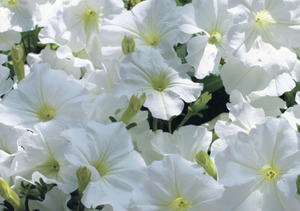 the new hybrid of the Duve series will amaze with the strength of the leaves, due to which large flowers remain open all the time;
the new hybrid of the Duve series will amaze with the strength of the leaves, due to which large flowers remain open all the time;- Pikobela hybrid of the Fantazia variety is a semi-ampelous flower variety, characterized by dense small flowers and increased frost resistance;
- the Limbo variety was replenished with a color assortment: along with the classic white, pink, blue flowers, a burgundy shade was created;
- variety Plush, unlike other plant species, blooms beautifully in poorly lit areas.
It is not for nothing that petunia is so popular with many gardeners. Even with little care, petunia will be able to give a beautiful and lush flowering all summer, and before the first frost... With the onset of cold weather down to -25C, you can take the pots indoors, and the plant with its inflorescences will still delight you for a long time. Plant this unique plant and you will certainly not regret it!
